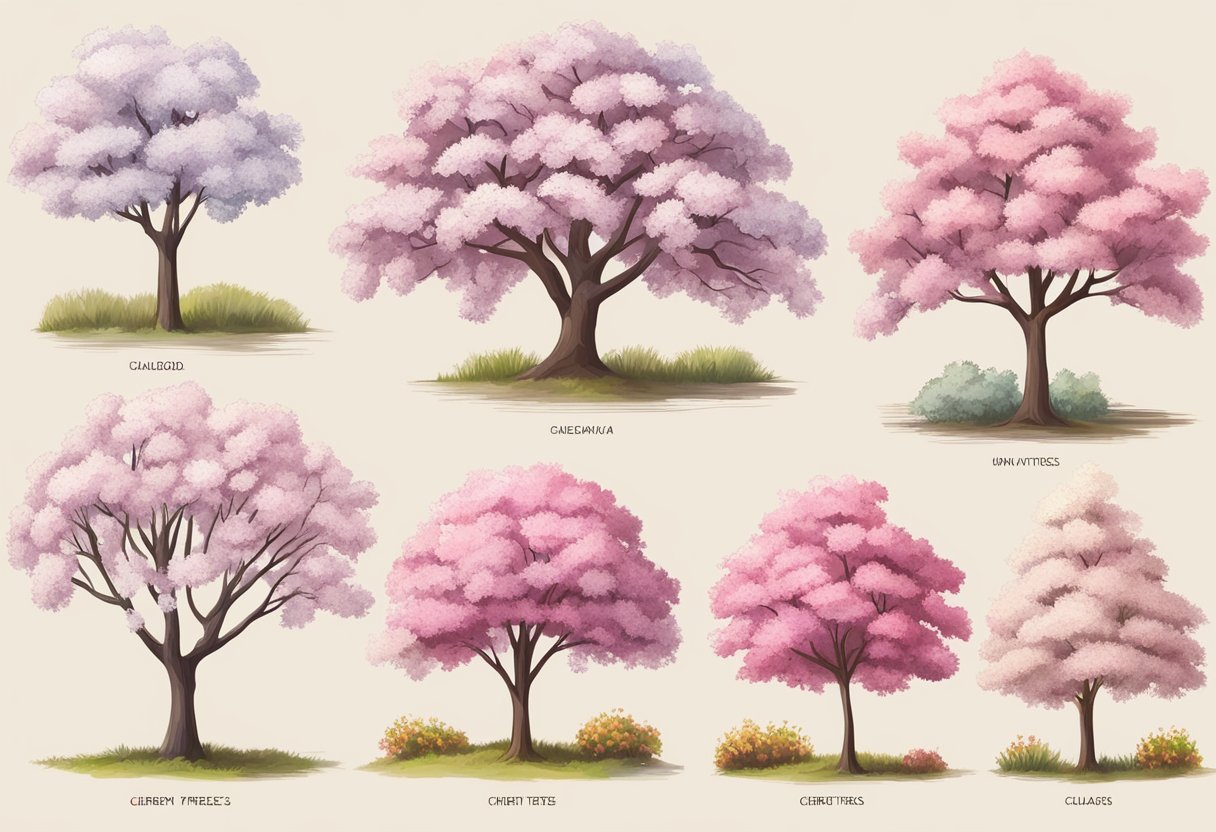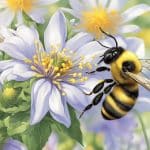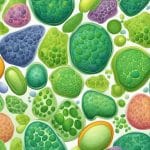Types Of Cherry Trees
Cherry trees are a popular and beautiful addition to any garden. With their stunning blossoms and delicious fruit, these trees are a favorite among gardeners and fruit lovers alike. There are many different types of cherry trees, each with its own unique characteristics and growing requirements.
Classification of Cherry Trees
Cherry trees fall under the genus Prunus, which includes many other fruit trees such as plums, apricots, and peaches. Within the Prunus genus, there are several species of cherry trees, including sweet cherries (Prunus avium) and sour cherries (Prunus cerasus). Sweet cherries are the type most commonly found in grocery stores and are often eaten fresh, while sour cherries are typically used for cooking and baking.
Popular Cherry Tree Varieties
Some of the most popular cherry tree varieties include the Bing cherry, which is a sweet cherry with a dark red skin and juicy flesh, and the Montmorency cherry, which is a sour cherry that is commonly used for making pies and preserves. Other popular varieties include the Rainier cherry, which has a yellow skin with a red blush and a sweet, creamy flesh, and the Stella cherry, which is a self-pollinating sweet cherry that is known for its large, juicy fruit.
Key Takeaways
- Cherry trees fall under the genus Prunus and include sweet and sour varieties.
- Some popular cherry tree varieties include the Bing cherry, Montmorency cherry, Rainier cherry, and Stella cherry.
- Cherry trees require specific cultivation and care, and may be susceptible to pests and diseases.
Classification of Cherry Trees

Cherry trees are classified into three main categories: sweet cherry trees, sour cherry trees, and ornamental cherry trees. Each of these categories has its own unique characteristics and uses.
Sweet Cherry Trees
Sweet cherry trees, also known as Prunus avium, produce large, juicy, and flavorful cherries that are commonly used in desserts and other culinary applications. These trees are typically larger than sour cherry trees, with a mature height of up to 30 feet. Sweet cherry trees require a moderate to high level of maintenance, including regular pruning and pest control.
Some popular varieties of sweet cherry trees include Bing, Rainier, and Lambert. These varieties differ in terms of their flavor, color, and size of the fruit they produce.
Sour Cherry Trees
Sour cherry trees, also known as Prunus cerasus, produce tart cherries that are commonly used in pies, jams, and other culinary applications. These trees are typically smaller than sweet cherry trees, with a mature height of up to 20 feet. Sour cherry trees require a low to moderate level of maintenance, including occasional pruning and pest control.
Some popular varieties of sour cherry trees include Montmorency, Morello, and Balaton. These varieties differ in terms of their flavor, color, and size of the fruit they produce.
Ornamental Cherry Trees
Ornamental cherry trees, also known as Prunus serrulata, are primarily grown for their beautiful blossoms rather than their fruit. These trees produce stunning pink or white blossoms in the spring, making them a popular choice for landscaping and ornamental purposes. Ornamental cherry trees come in many different varieties, each with its own unique characteristics and uses.
Some popular varieties of ornamental cherry trees include Yoshino, Kwanzan, and Weeping Cherry. These varieties differ in terms of their blossom color, size, and shape.
In conclusion, understanding the classification of cherry trees is important for selecting the right tree for your needs and ensuring proper care and maintenance. Whether you are looking for a sweet cherry tree for your next dessert or an ornamental cherry tree to add beauty to your landscape, there is a cherry tree variety that will meet your needs.
Popular Cherry Tree Varieties
Cherry trees are a popular choice for home gardeners and orchard growers alike. With so many different varieties available, it can be difficult to know which one to choose. In this section, we will explore some of the most popular cherry tree varieties, including Stella, Bing Cherry, Rainier Cherry, and Montmorency Cherry.
Stella Cherry
Stella Cherry is a self-fertile variety that produces large, dark red fruit with a sweet flavor. This variety is known for its high yield and excellent resistance to disease. Stella Cherry trees are also relatively small, making them a good choice for small gardens or patio areas.
Bing Cherry
Bing Cherry is one of the most popular sweet cherry varieties in the world. This variety produces large, dark red fruit with a sweet flavor and firm texture. Bing Cherry trees are also known for their beautiful, showy blossoms in the spring. However, this variety requires a pollinator to produce fruit, so it is important to plant another cherry tree nearby.
Rainier Cherry
Rainier Cherry is a relatively new variety that was developed in the 1950s. This variety produces large, yellow fruit with a red blush and a sweet, delicate flavor. Rainier Cherry trees are also known for their beautiful, showy blossoms in the spring. However, like Bing Cherry, this variety requires a pollinator to produce fruit.
Montmorency Cherry
Montmorency Cherry is a sour cherry variety that is commonly used for baking and cooking. This variety produces medium-sized, bright red fruit with a tart flavor. Montmorency Cherry trees are also known for their beautiful, showy blossoms in the spring. This variety is self-fertile, so it does not require another cherry tree nearby to produce fruit.
In conclusion, there are many different varieties of cherry trees to choose from, each with its own unique characteristics and flavor. Whether you are looking for a sweet or sour cherry variety, there is sure to be a variety that will suit your needs.
Cultivation and Care
Cherry trees are relatively easy to grow and care for, as long as their basic needs are met. In this section, we’ll cover the most important aspects of cultivating and caring for cherry trees.
Soil and Watering
Cherry trees prefer well-draining soil that is rich in nutrients. They also require regular watering, especially during the first few years of growth. However, it’s important not to overwater cherry trees, as this can lead to root rot. A good rule of thumb is to water deeply once a week, and adjust the frequency based on the weather conditions and soil moisture.
Sunlight and Spacing
Cherry trees need full sun to produce fruit, so it’s important to plant them in a location that receives at least six hours of direct sunlight per day. They also need adequate spacing to allow for proper growth and airflow. The exact spacing will depend on the variety of cherry tree, but a general rule is to plant them at least 20 feet apart.
Pollination and Fruit Production
Most cherry trees are self-fertile, meaning they can produce fruit without the need for a pollinator. However, cross-pollination can increase fruit production and improve the quality of the fruit. If you’re planting multiple cherry trees, it’s a good idea to choose varieties that bloom at the same time to ensure proper cross-pollination.
When it comes to harvesting cherries, timing is key. Sweet cherries are usually ready to harvest in late spring or early summer, while sour cherries are ready in mid to late summer. It’s important to pick the cherries at the right time to ensure maximum sweetness and flavor.
Overall, with proper care and attention, cherry trees can provide a bountiful harvest for years to come.
Cherry Trees Across the Seasons
Cherry trees are known for their beautiful flowers, delicious fruits, and stunning fall foliage. Throughout the year, these trees go through different stages that showcase their unique characteristics.
Spring Blossoms
In the spring, cherry trees burst into bloom, covering their branches with clusters of delicate flowers. The cherry blossom season is a highly anticipated event in many parts of the world, drawing crowds of people to admire the beauty of these trees. The flowers come in a range of colors, from white to pink to deep red, and their sweet fragrance fills the air.
Summer Fruits
As the weather warms up, cherry trees begin to produce their fruit. The cherries come in different varieties, each with its own flavor and texture. Some are sweet, while others are tart, and they can be eaten fresh or used in a variety of recipes. Cherry trees are a popular choice for home gardeners, as they are relatively easy to grow and require little maintenance.
Autumn Foliage
In the fall, cherry trees put on a show of their own, as their leaves turn brilliant shades of red, orange, and yellow. The changing colors of the leaves are a result of the tree’s preparation for winter, as it withdraws nutrients from the leaves and stores them in the branches and trunk. The fall foliage of cherry trees is a stunning sight, and many people enjoy taking walks or drives to see the changing colors.
Overall, cherry trees are a beautiful and versatile addition to any landscape. Whether you are looking for spring blossoms, summer fruits, or autumn foliage, these trees have something to offer. With a little care and attention, you can enjoy the beauty and bounty of cherry trees for years to come.
Pests, Diseases, and Challenges
Common Pests
Cherry trees are susceptible to a variety of pests, including aphids, cherry fruit flies, and cherry slugs. Aphids are small, soft-bodied insects that live on the underside of leaves and the stems of the tree. They can cause yellowing leaves and necrotic spots on the leaves. Cherry fruit flies lay their eggs inside the fruit, causing it to rot and drop prematurely. Cherry slugs eat the leaves down to the skeleton, resulting in unproductive plants and abnormal growth.
Disease Management
Cherry trees are also prone to various diseases, including silver leaf, brown rot, and bacterial canker. Silver leaf is a fungal infection that attacks the leaves and wood of the tree. It can be identified by the appearance of a silvery sheen on the leaves, followed by dying branches. Brown rot is a fungal infection that causes the fruit to rot and turn brown. Bacterial canker is a bacterial infection that causes cankers on the bark of the tree.
To manage these diseases, it is important to practice good sanitation practices, such as removing infected plant debris and disinfecting tools between uses. Fungicides and antibiotics can also be used to treat infected trees.
Environmental Stressors
Cherry trees can also be affected by environmental stressors, such as cold climates and cracking. Cold climates can cause frost damage to the buds and flowers, resulting in reduced fruit production. Cracking occurs when the fruit absorbs too much water, causing the skin to split. This can be prevented by providing adequate irrigation and avoiding over-fertilization.
In summary, while cherry trees can face a variety of pests, diseases, and environmental stressors, proper management and care can help prevent and treat these issues.






